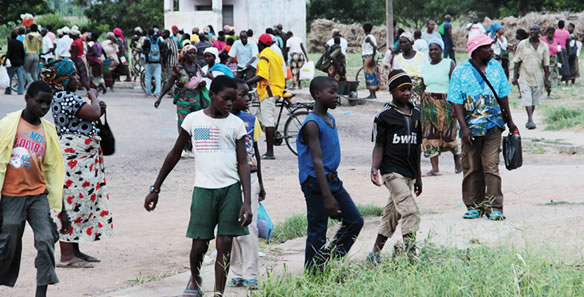Mozambique’s Communications Authority seeks consultancy team for Strategic Plan
Only five percent of Mozambican adult population has insurance

O País (File photo) /ISSM aims to increase the number of Mozambican using insurance services
Of eight million Mozambicans of working age, only 5.1 percent have formal insurance. Now, the Insurance Supervision Institute of Mozambique (ISSM) wants to increase that figure by extending provision to lower income groups. Micro-credit is seen as the viable alternative for this population segment, but only 0.3 percent of the population is covered by this type of insurance.
Recent statistics indicate that the country has about 24 million inhabitants, of whom around 8.4 million are of working age. But independent research revealed that by 2014, only 14 percent of the Mozambican adult population was aware of the meaning of the term “insurance”.
An ISSM workshop promoting micro-insurance yesterday revealed that, of Mozambique’s active population, only about 7.7 percent have some type of insurance, of which only 5.1 percent had formal insurance. The remainder are informally insured, mainly in funeral support associations, especially religious groups and family accounts.
Acknowledging that this is a very low percentage, the ISSM organised the workshop to discuss ways to include other population segments in the insurance system.
“The main goal of this workshop to consider measures to accelerate the provision of insurance to low-income population and micro-entrepreneurs,” the ISSM’s Otília Santos explained.
Microcredit is considered the most viable alternative for this population segment, since it is more accessible. Although the potential of this group for micro-insurers is known, only 0.3 percent of the population is covered by this type of insurance. Only one micro-insurer operates in Mozambique, and only four traditional insurers are authorised to operate in the country.
João Jangaia, from the Mozambican Association of Insurance Companies, believes that microinsurance can break the cycle of poverty and the risks of loss of income that poorer sections of the population are at risk of.
“Low-income people live in risk-filled environments and are more vulnerable to dangers, illness, accidental death and disability. Poverty and vulnerability are reinforced in a downward spiral. The micro-insurance can break the downward spiral and reduce the damage in case of accident. Unpredictable losses can turn into payments which will reduce the negative impact of accidents,” Jangaia says.
Jangaia draws attention to the fact that micro-insurance is not a determining factor in eliminating poverty, but can contribute to it. “Micro-insurance in itself does not eliminate poverty but, in association with other instruments, it can make a valuable contribution to poverty reduction,” he says.
The ISSM is developing financial education material for secondary schools in the hope that more Mozambicans will have formal insurance in the future. The ISSM believes that educated youngsters will in turn teach their family and friends, increasing the overall number of people with insurance. Using insurance makes people aware of the financial system, in turn boosting confidence in the financial system improving living conditions.













Leave a Reply
Be the First to Comment!
You must be logged in to post a comment.
You must be logged in to post a comment.